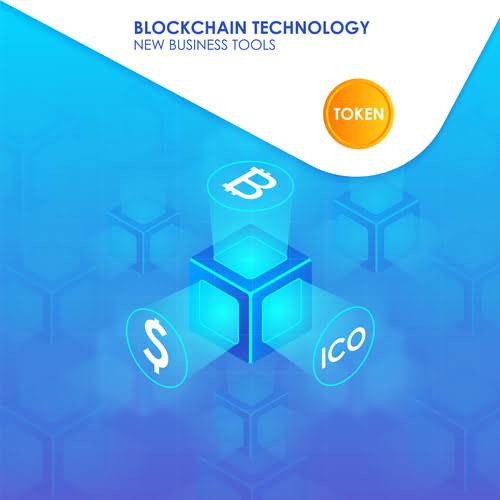Content
The model’s aim is to improve existing software development processes, but it can also be applied to other processes. It’s important to note that security plays a big role in any development process. It’s good to know that organizations now consider DevSecOps in their approach. DevContentOps will be another emerging area, as more software apps are backed by headless CMS repositories and are managed by content teams in collaboration with IT.
Our mission is to shine a spotlight on the growing importance of DevContentOps to business and technical leaders seeking to build innovative and agile content-rich digital experiences that drive business value. With DevOps methodology, 57% of developers admit to shipping codes twice as fast as they did the previous continuous delivery maturity model year. In short, changes at this level are ones of refinement, not tectonic shifts. Chooses technology stack based on what is best for each purpose. Database migration and rollback is automated and tested for each deploy. Technology that makes it simple to roll back and forth between database versions.
- It’s not just that, either; they can say by how much and over what time windows.
- Ideally, teams at this level start to involve compliance teams directly in the planning process.
- Instead, they receive new code from developers or QA with little knowledge of how it works or how it to deploy it.
- Five levels of continuous test automation maturity were described.
- The report introduces integrability and common forms of integrability requirements for software architecture.
- It works as a version control and can be used to keep track of changes in any set of files.
Each level will have signposts that will help an organization recognize if they’re at that maturity level, as well as steps to take to move the organization to the next level. Continuous Integration is a software development practice that aims for a frequent integration of individual pieces of work. Commonly each person integrates at least once per day giving place to several integrations during the day. Each integration should be verified by an automated Build Verification Test .
Level 2: Holding Your Breath
The team has a Jenkins server, but they’re certainly not using it for true continuous integration. Instead, they automate a few build steps and perform the rest by hand. That kind of piecemeal approach leads to individual scripts for every little process the team needs to complete. Scripts like those tend to quickly become unwieldy, and rapidly become completely unmanageable. As you can see, there is a lot of axis to focus on to have an overview of your devops journey.
In an effort to determine why this was occurring, the United States Air Force funded a study at the Software Engineering Institute . I keep seeing questions from users struggling to get the openCost UI to run in-cluster. This blog shares the configuration I use to run the UI within a Kubernetes cluster. If you’d like to have Armory help enable Stages 4 & 5 software deployments to make your company’s ability to deploy software a core competency, just reach out to us using the form below. Amplify feedback using tools that provide cross-team visibility. 19% of respondents in your category said they deploy code to production weekly.
Devops, Quels Changements Culturels ?
The first step in moving to DevOps is to pull from agile principles – people first, then process and tools. Deploying is the core of how you release your application changes. You can fully orchestrate tools that are involved in the process and manage your release milestones and stakeholders with Clarive. Fully automated provisioning and validation of environments. It is easy to replace technology for the benefit of something better .
You’ll now receive all of the valuable information we share about software delivery. A team at this level has largely committed to their DevOps journey but may not be seeing promised returns yet. Some changes have certainly improved things for the team, but some feel like a lot of busy work for little gain.

Ideally, teams at this level start to involve compliance teams directly in the planning process. Insecure and non-compliant code never makes it into the software at all. The operations team continues to work to fully automate their continuous integration https://globalcloudteam.com/ pipeline, ironing out every need for manual intervention. At this level there is a high level or knowledge and confidence regarding continuous test automation. Dev and QA teams are tightly integrated to optimize knowledge and efficiency.
All changes (code, configuration, environments, etc.) triggers the feedback mechanisms. Feedback on database performance and deployment for each release. For example, if you’re new to CI/CD, the starting point is to ensure all your code is in source control, encourage everyone on the team to commit changes regularly, and start writing automated unit tests.
A Maturity Model For Continuous Delivery
Or your goal may be to achieve continuous deployment, with updates being shipped if they pass all stages of the pipeline successfully. You can also use continuous feedback from production to inform hypothesis-driven development . While the above five levels of continuous test automation maturity provide a practical guide for defining maturity against characteristics of People, Process and Technology, they are not an absolute measure of maturity. Organizations, or specific applications within an organization, may match some of the characteristics for different levels. The figure below of Continuous Test Automation Maturity Model is a useful tool to determine the “best fit” for the maturity of an organization or application within an organization. By marketing the characteristics that best match, gives a visual picture of the dominant level of maturity.

This also is a quick way to determine areas to address to improve the level of maturity. At this level test automation is used from end-to-end across the pipeline. Dev and QA teams cooperate to ensure a good level of test coverage is automated. There is no standard continuous test automation maturity model.
Teams at this level often times see operations as their own team, distinct from engineering or project management teams. They’re rarely consulting during the planning or early implementation stages of the project. Instead, they receive new code from developers or QA with little knowledge of how it works or how it to deploy it. Then they’re on the hook for trying to fit it into the rest of the system.
Levels
Admittedly, there is more focus now on security as part of the DevOps process with several companies recognizing the benefits. This coincides with the report that 72% of security professionals see security in their organization as “good” and “strong”. The “strong” category saw an increase to 33% compared to 19.95% the previous year.

If issues are not quickly addressed early during development, it can lead to bottlenecks and delays. Each week, our researchers write about the latest in software engineering, cybersecurity and artificial intelligence. Sign up to get the latest post sent to your inbox the day it’s published. This report summarizes how to systematically analyze a software architecture with respect to a quality attribute requirement for integrability. The report introduces integrability and common forms of integrability requirements for software architecture.
Maturity Models
It provides a set of definitions, core concepts, and a framework for reasoning about integrability and satisfaction of integrability requirements by an architecture and, eventually, a system. It describes a set of mechanisms, such as patterns and tactics, that are commonly used to satisfy integrability requirements. An analyst can use this method to determine whether those requirements, represented as a set of scenarios, have been sufficiently well specified to support the needs of analysis. The reasoning around this quality attribute should allow an analyst, armed with appropriate architectural documentation, to assess the risks inherent in today’s architectural decisions, in light of tomorrow’s anticipated needs.
The use of machine learning or artiï¬cial intelligence (ML/AI) holds substantial potential toward improving many functions and needs of the public sector. For example, if an ML model is trained on data that is different from data in the operational environment, ï¬eld performance of the ML component will be dramatically reduced. Separate from software engineering considerations, the expertise needed to ï¬eld an ML/ AI component within a system frequently comes from outside software engineering. As a result, assumptions and even descriptive language used by practitioners from these different disciplines can exacerbate other challenges to integrating ML/AI components into larger systems.
Since databases schema changes are sometimes delicate, make sure to include your DBA team into the peer review process, so that changes are 1) code; 2) can be merged and patched; 3) can be code reviewed. Or maybe your organization or team is starting to plan to fully embrace DevOps and your team is researching what is exactly what to need to install in order to have the perfect toolchain. Perhaps you have a gap in some processes that you are not even aware of.
Even the daily or weekly release of code will produce a report that will be sent every early morning. To accomplish this you can install the Selenium app in Clarive. Without the good culture and mindset automation can be worst. Now that you have an overview of your maturity, you can plan actions to help your teams upgrading their maturity regarding your company’s goals, and pilot the overall transformation. My goal here is to present you a DevOps assessment matrix which can be useful to evaluatue your DevOps maturity. The one I’m presenting you was created after a lot of iterations with teams from many industries and companies.
Culture is the foundation on which every successful team is built and is a core ingredient of a DevOps implementation. A DevOps culture brings a sense of shared responsibility across teams, yields faster time to market and faster resolution times, and helps mitigate unplanned work. In this blog post, we will be exposing maturity level checklists for different DevOps areas so you have an idea where you at in terms of Continuous Delivery.
100% of Integration tests are automated, automated regression tests are integrated together with the code changes. Organizations were originally assessed using a process maturity questionnaire and a Software Capability Evaluation method devised by Humphrey and his colleagues at the Software Engineering Institute. Air Force he began formalizing his Process Maturity Framework to aid the U.S.
The practices described at each level of maturity all help you work towards a fast, reliable, repeatable release process that provides rapid feedback on changes. At this level there is little evidence of test automation skills, test automation processes are not apparent and test automation technology has major gaps. Test acceleration provided by automation of test activities is critical to assure adequate quality coverage of products and services while reducing bottlenecks needed to meet the increasing pressure for fast releases. More mature continuous test automation strategies are better able to meet the competing needs of quality and speed. The full representation of the Capability Maturity Model as a set of defined process areas and practices at each of the five maturity levels was initiated in 1991, with Version 1.1 being completed in January 1993.